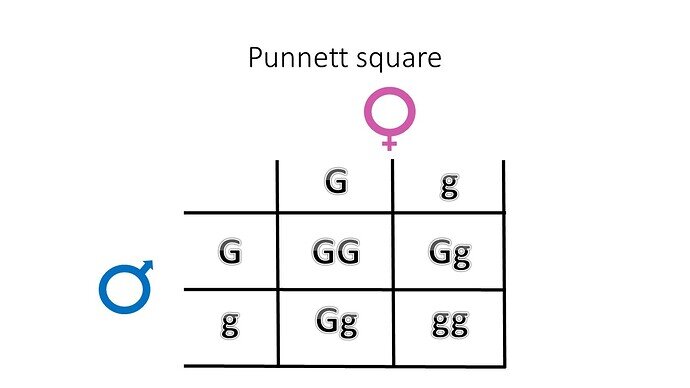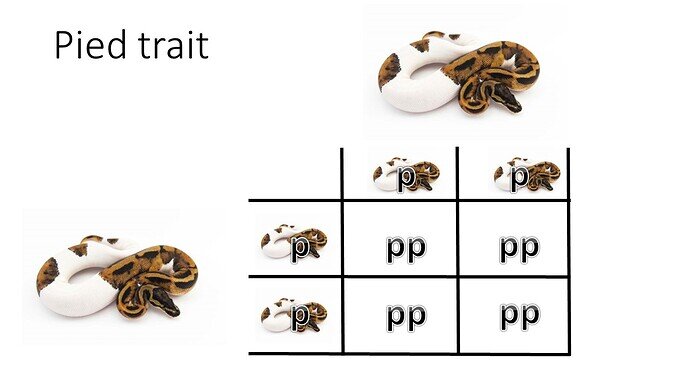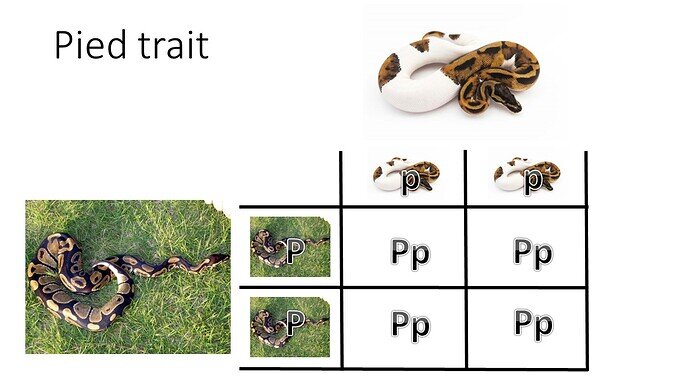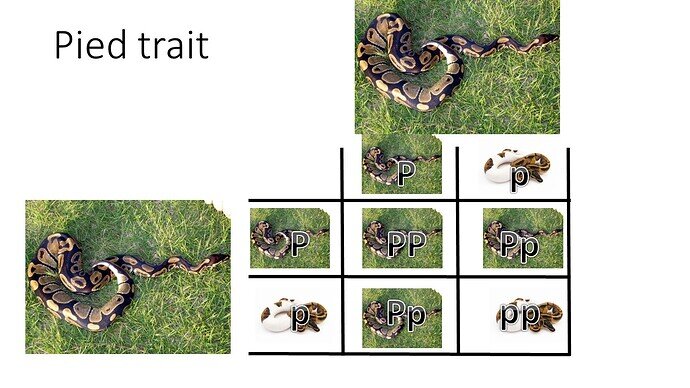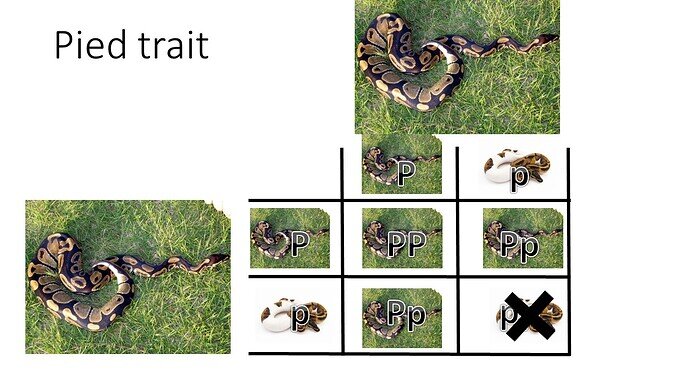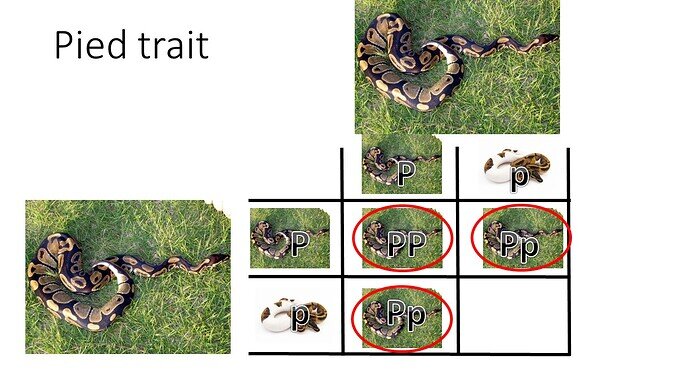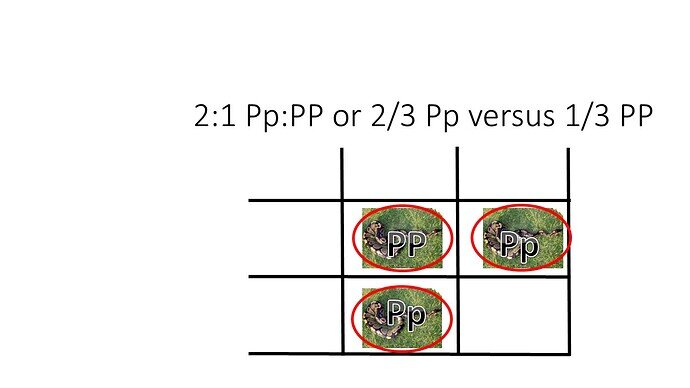Alright… Let me see if I can brush my old lecture hat off and help a little better now
We will start with the basics of a Punnett square
This is a way to “visualize” the potential outcomes for any single offspring when you pair to animals together. Each parent, male and female, carry two copies of each gene. For the purposes of this conversation only, I am going to use a little non-conventional language and we will consider the wildtype gene to be the CAPITALIZED notation and the lowercase to be the mutant notation. So here is our basic Punnett for any given gene G/g:
.
.
.
Since we are dealing with piebaldism, I will use P/p to designate the gene:
.
.
.
Starting with the easiest combination first - take two Pieds and breed them together:
When you look at the genes alone, everything is lowercase because all the animals are carrying two copies of the mutant gene
.
.
.
Applying a “visualization” of the gene, you get this:
Each parent can only donate a
pied (p) to the equation, so all the babies are then also carrying only
pied (pp) making them visual Pied:
.
.
.
Now, we come to the first part of your confusion - breeding a visual Pied to a wildtype:
We now have both versions of the gene in play, the wildtype (P) and the mutant (p)
.
.
.
Applying a “visualization” of the genes, gives you this:
.
.
.
There are two important things you need to take note of here - ‘phenotype’ which is what the animal looks like, and ‘genotype’, which is what genes the animal is carrying. All the babies from this pairing have one copy of the normal gene (P) and one copy of the mutant gene (p) so their genotype then is (Pp). However, the only way you get a visual Piebald animal is if you have two copies of the mutant gene. Because none of these babies have two copies, their phenotype is that of the wildtype:
The term ‘het’ is hobby speak for ‘
heterozygous’ which means they have two different forms of the gene which, in this case, are the wildtype form of
piebald (P) and the mutant form (p).
All of these babies are 100% het Pied because genetically they are (Pp)
So, any baby that had only one Pied animal as a parent will make babies that are guaranteed to carry the mutant gene (p) and so they would be listed as being 100% het
.
.
.
Now, the second place you seem to be having a little confusion - Pairing two 100% hets together:
Again, we have both versions of the gene in play, the wildtype (P) and the mutant (p), but the dynamic here is a little more complicated
.
.
.
And applying a “visualization” of the genes, gives you this:
.
.
.
Remembering what I said above about ‘phenotype’ being what the animal looks like, versus ‘genotype’ being what genes the animal is carrying, you now have the complete range of genetics for babies from this pairing. Some will have two copies of the wildtype gene (P) giving them a genotype of (PP), some will have one copy of the wildtype gene (P) and one copy of the mutant gene (p) giving them a genotype that is (Pp), and some will have two copies of the mutant gene (p) giving them a genotype (pp). While we have three possible genotypes (PP, P/p, and pp), because you only get a visual Pied when there are two copies of the mutant gene in the same animal (pp), we only have two phenotypes - wildtype and visual:
.
.
.
Obviously, we know the genotype of a visual Pied animal from this pairing. But because both the (PP) and the (Pp) genotype animals look the same, we cannot know what the genotype is for the wildtype-looking animal. This is where the term ‘possible heterozygous’ or “poss het” enters into the hobby
.
.
.
So we can toss out the visual animal from this pairing (because, again, we already know the genes there for certain) and then focus only on the three animals I have circled:
.
.
.
What we are left with is a statistical probability where there are two possibilities a wildtype-looking animal has the heterozygous genotype (Pp) and one possibility a wildtype-looking animal has the homozygous wild-type genotype (PP).
That 2:1 ratio is the same as saying 2/3 of a chance of a wildtype-looking baby being genetically heterozygous
2/3 = 66% so the wildtype-looking babies are then 66% possible het Pied
.
.
.
Does that clear it up a little better for you?
.
.
.
If you go back up to this slide:
You can see how it is possible for a clutch to produce a visual and still not get 100% hets.
If your concern is whether the animals you are buying are 100% het then you should ask the seller what the parents were. So long as one parent was a visual Pied then you are safe (assuming the seller is trustworthy, and that is why you check their reviews 
 )
)
